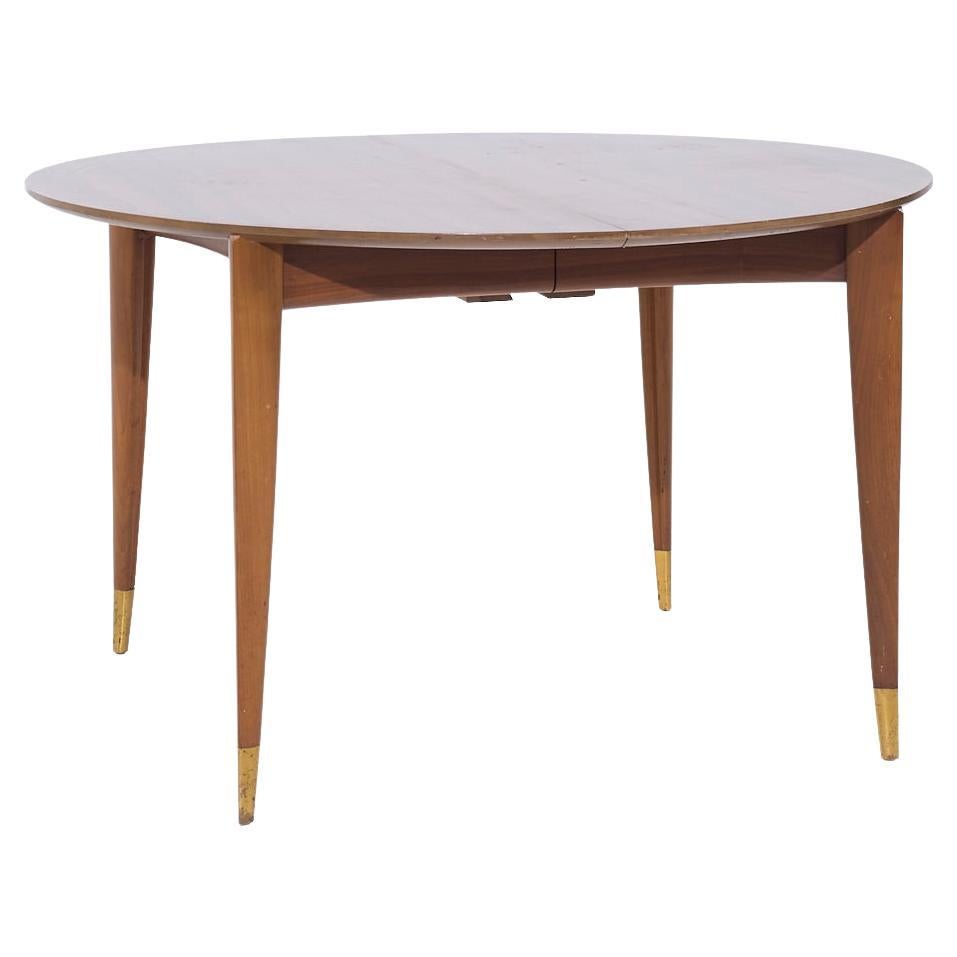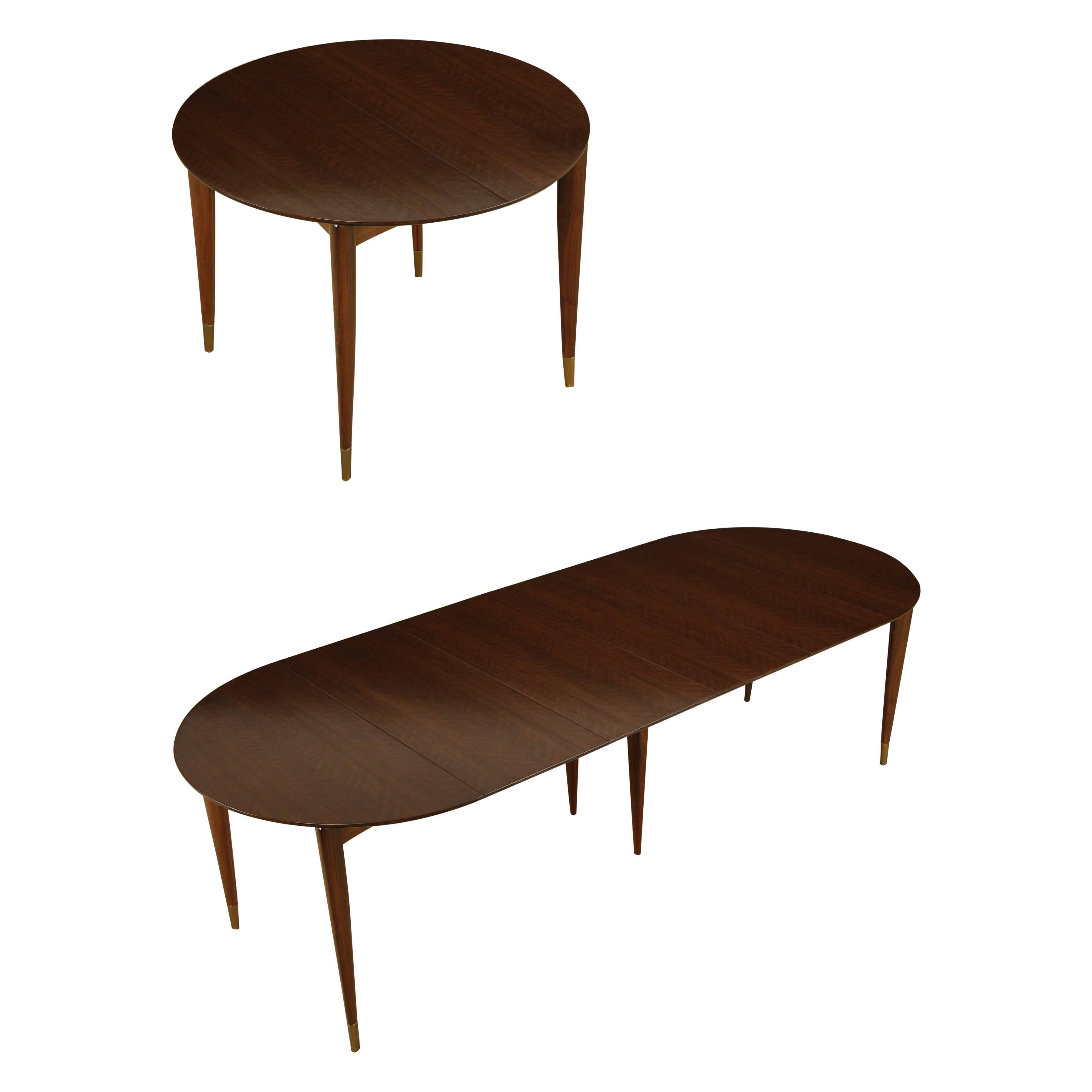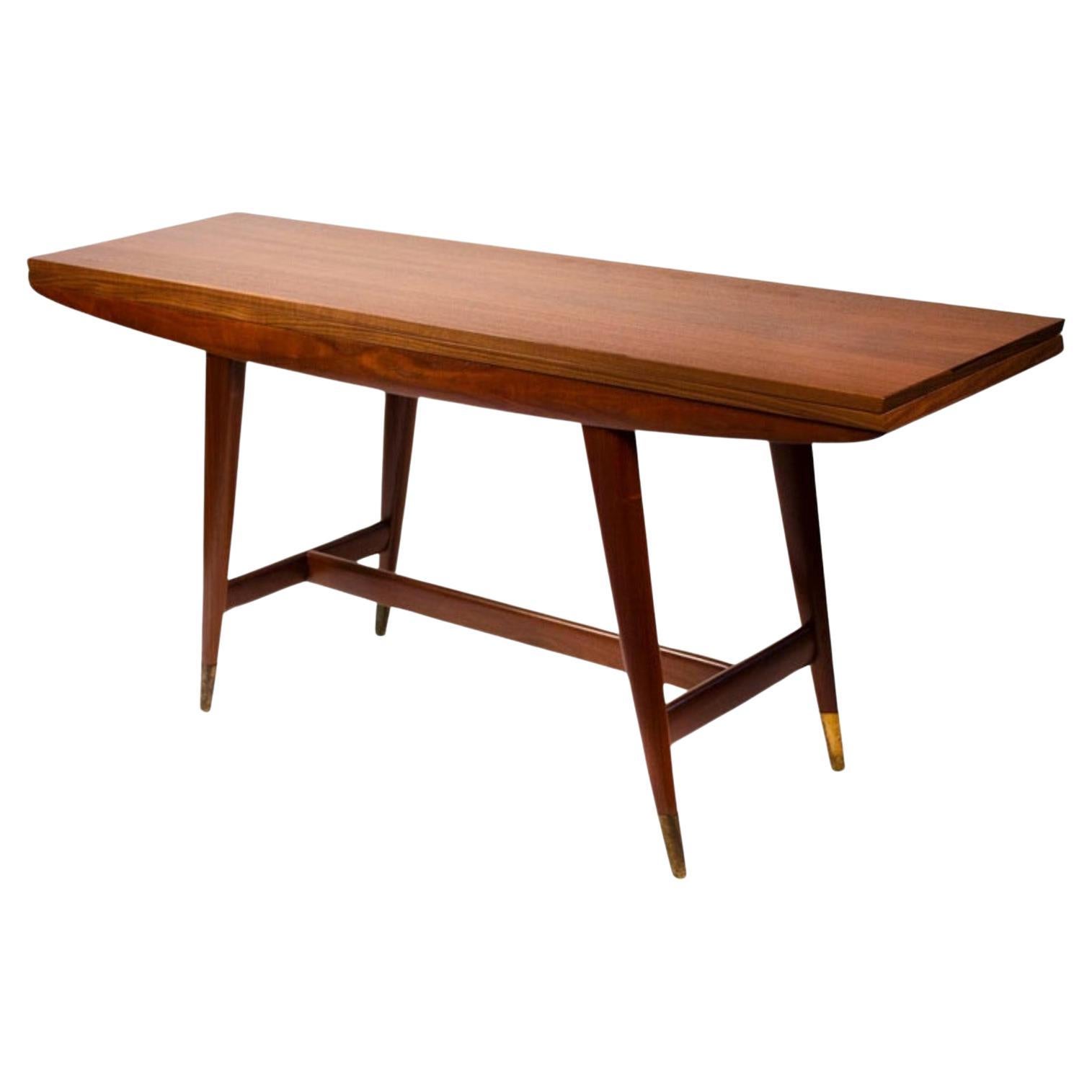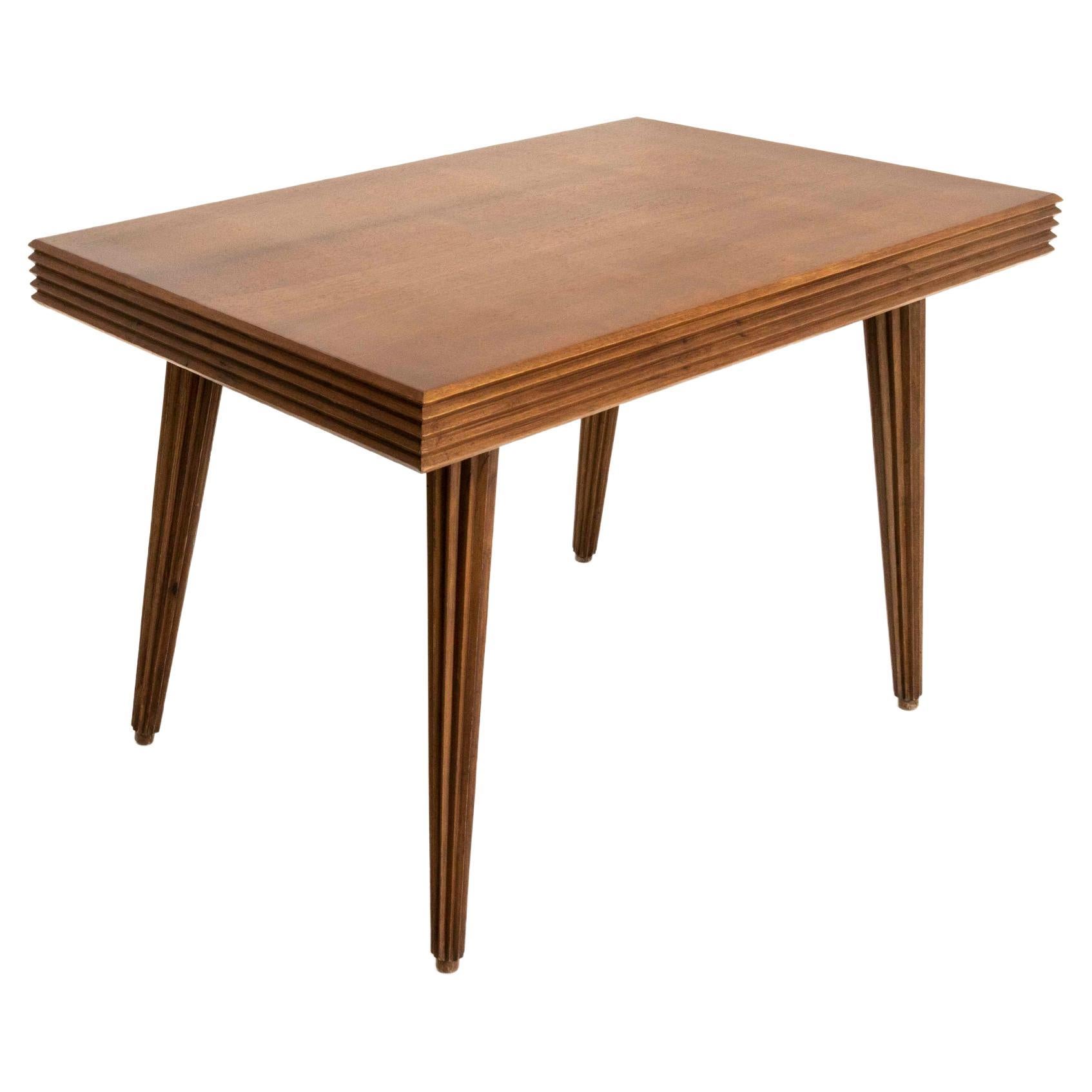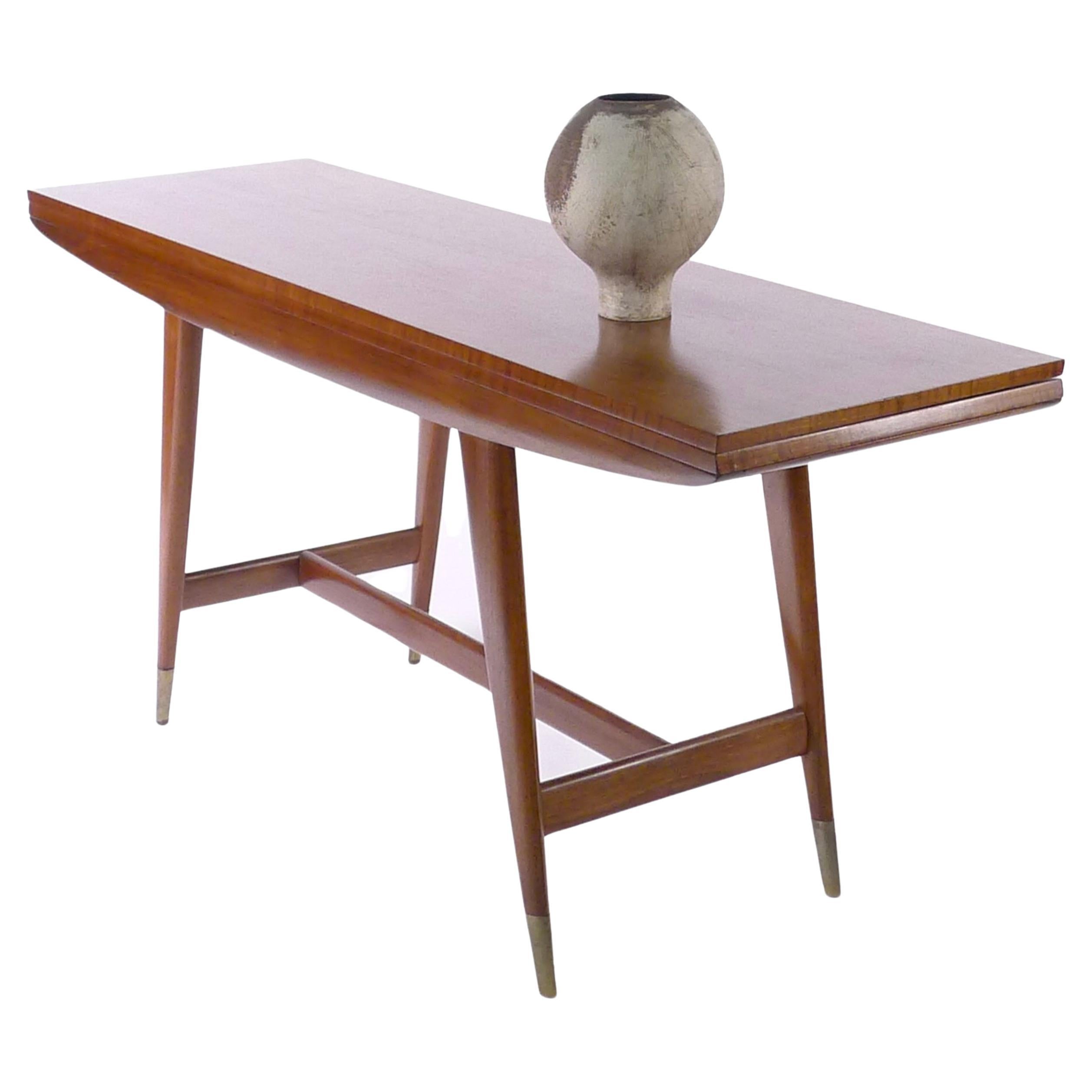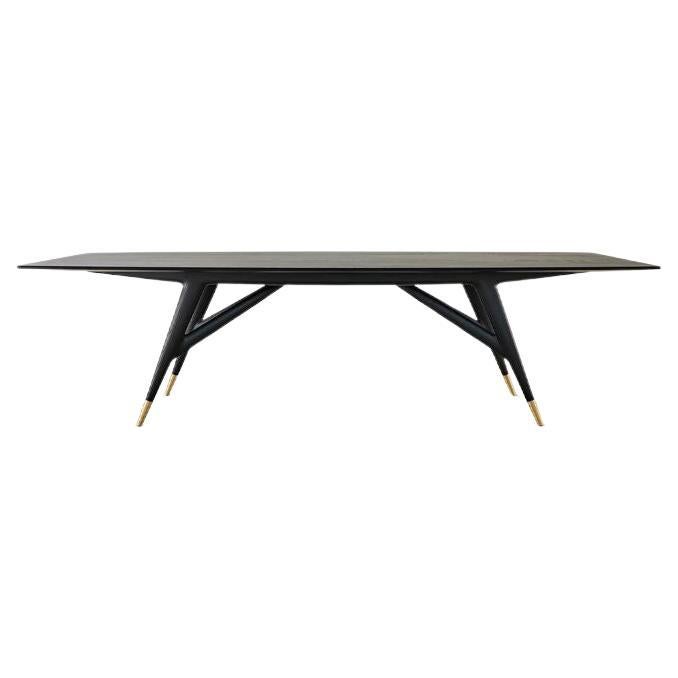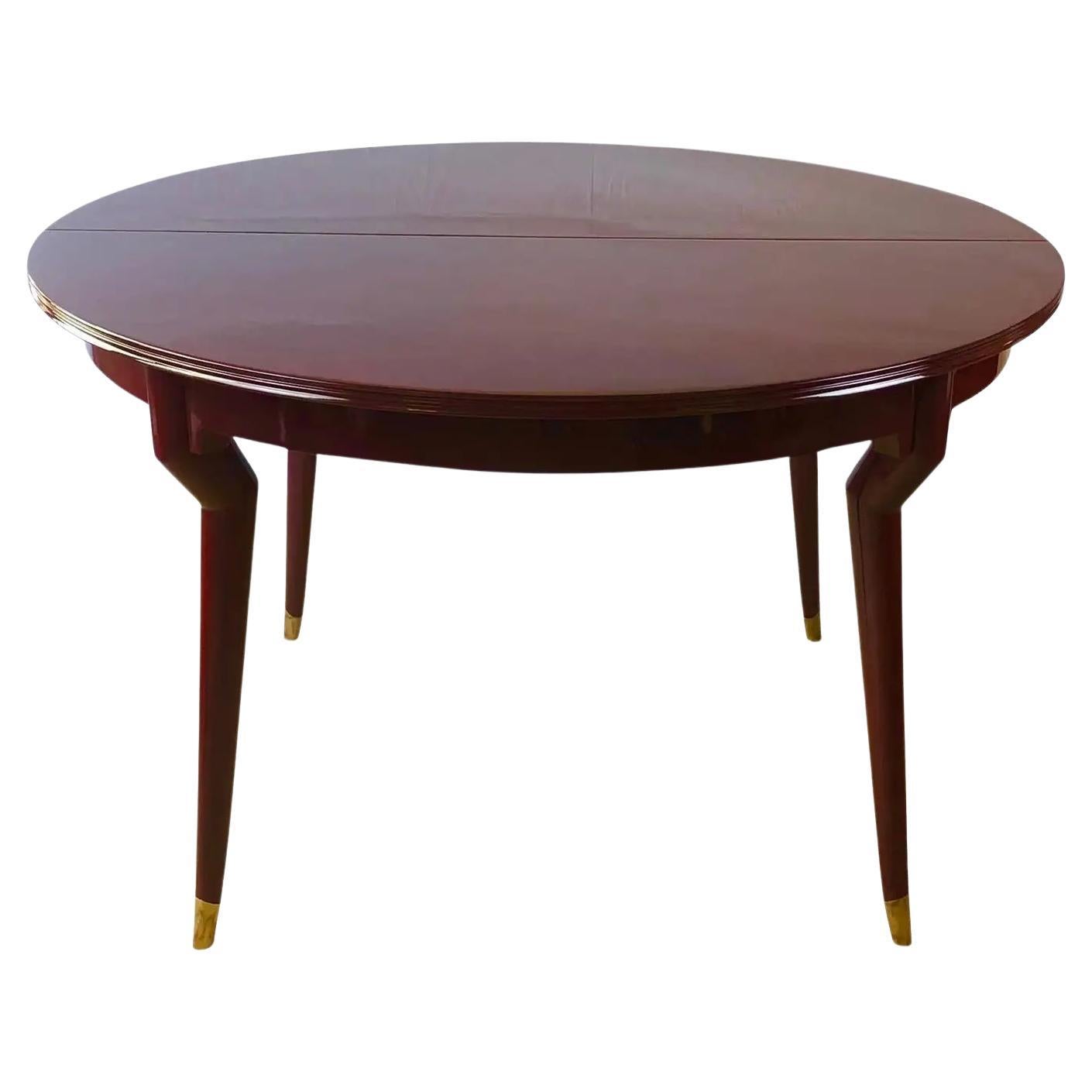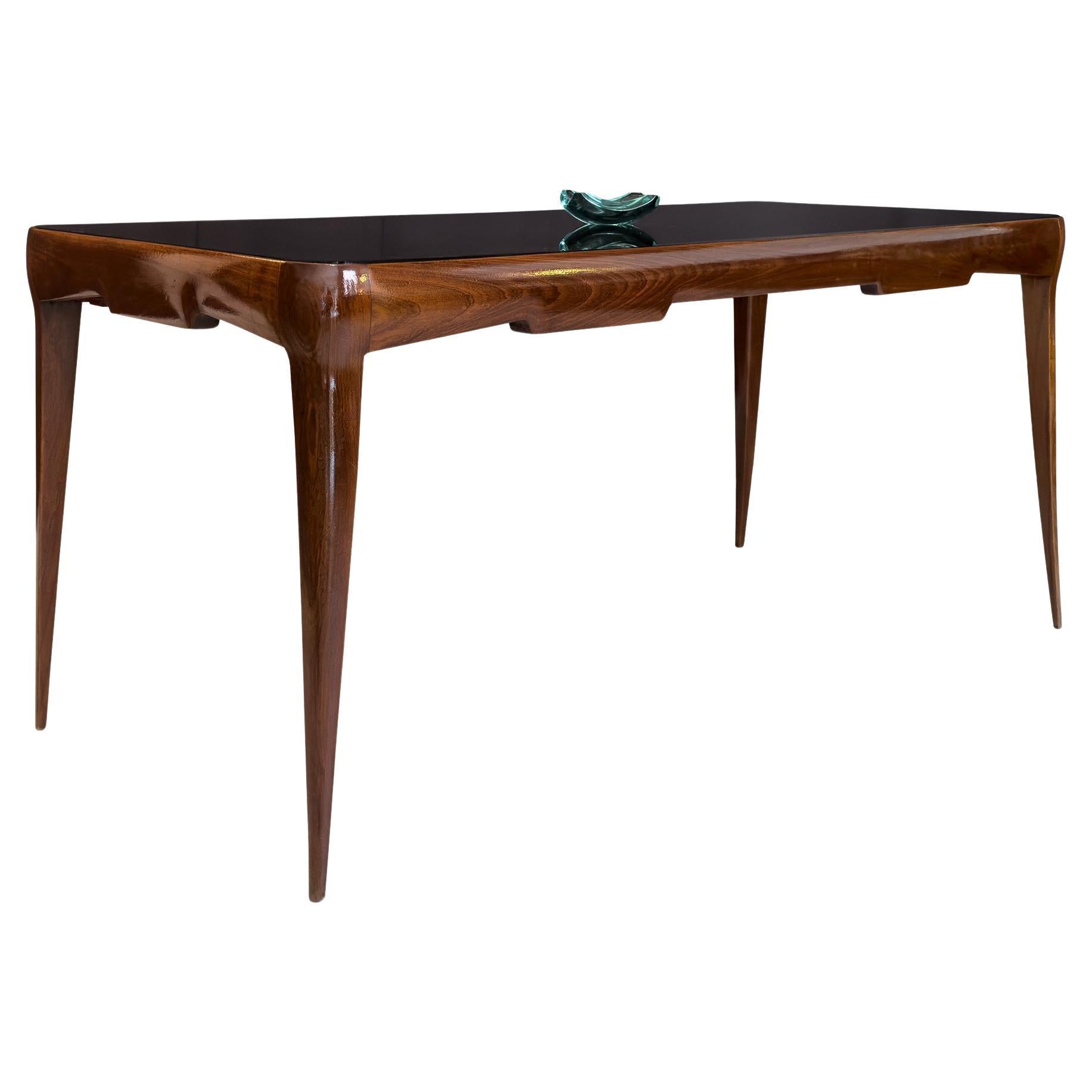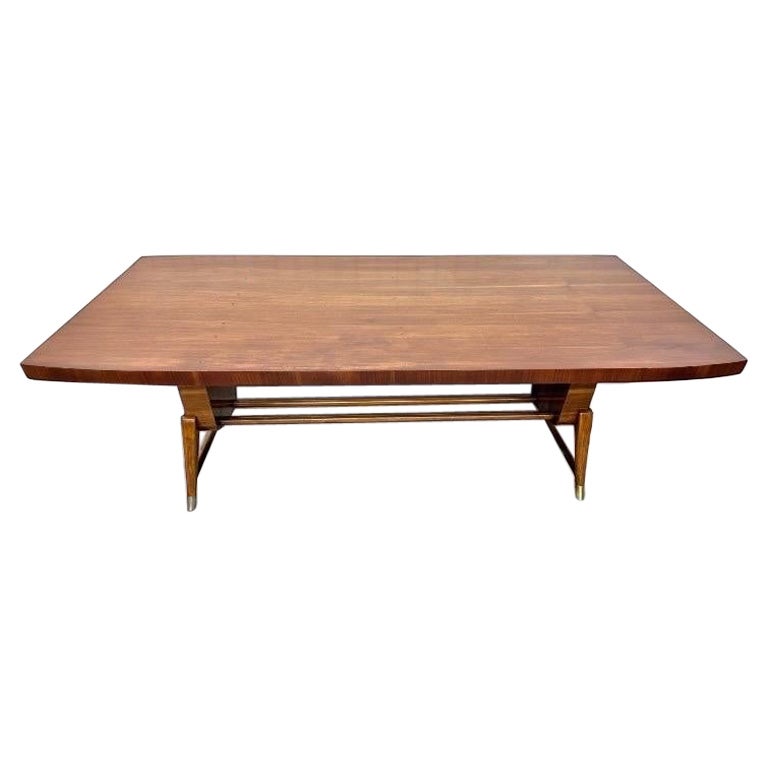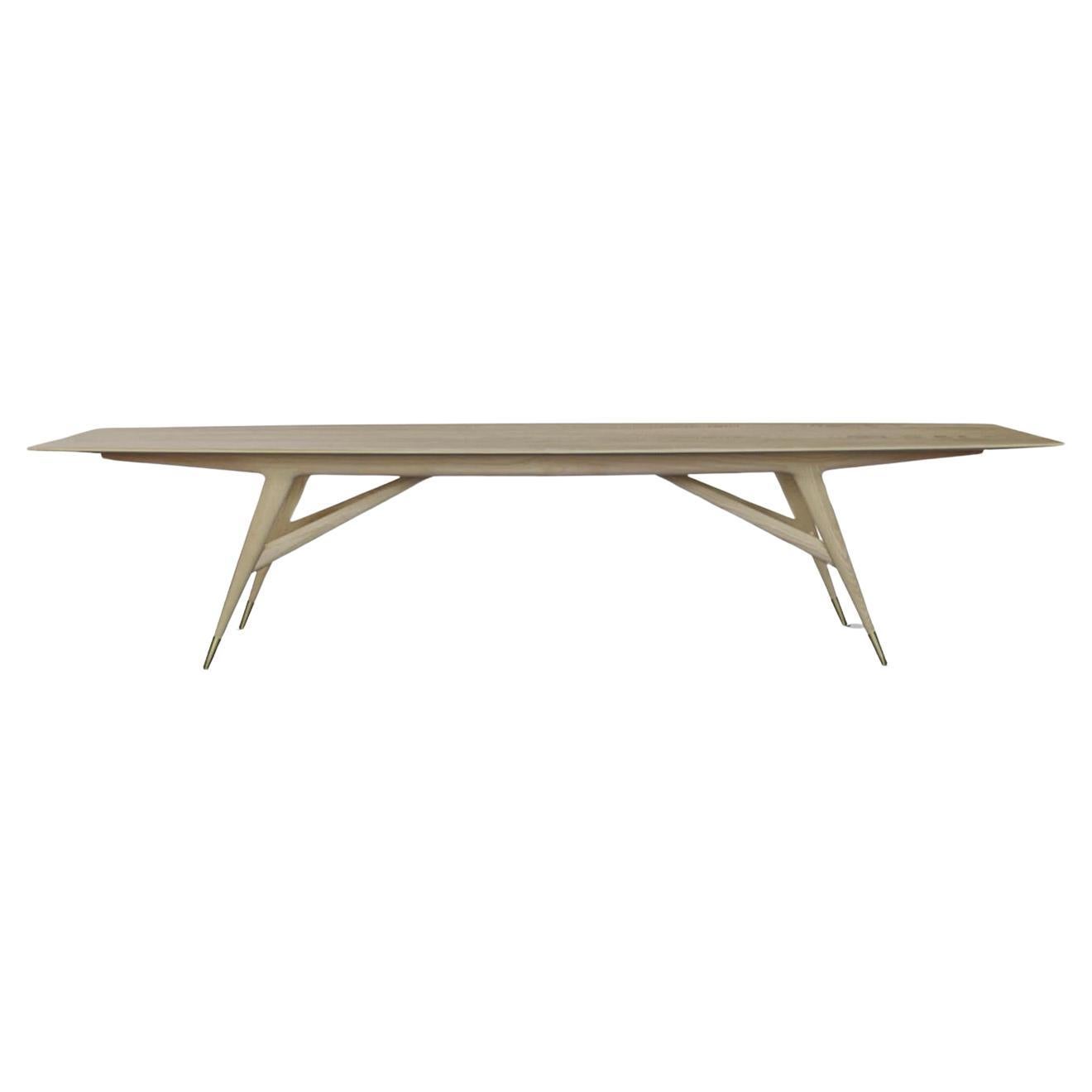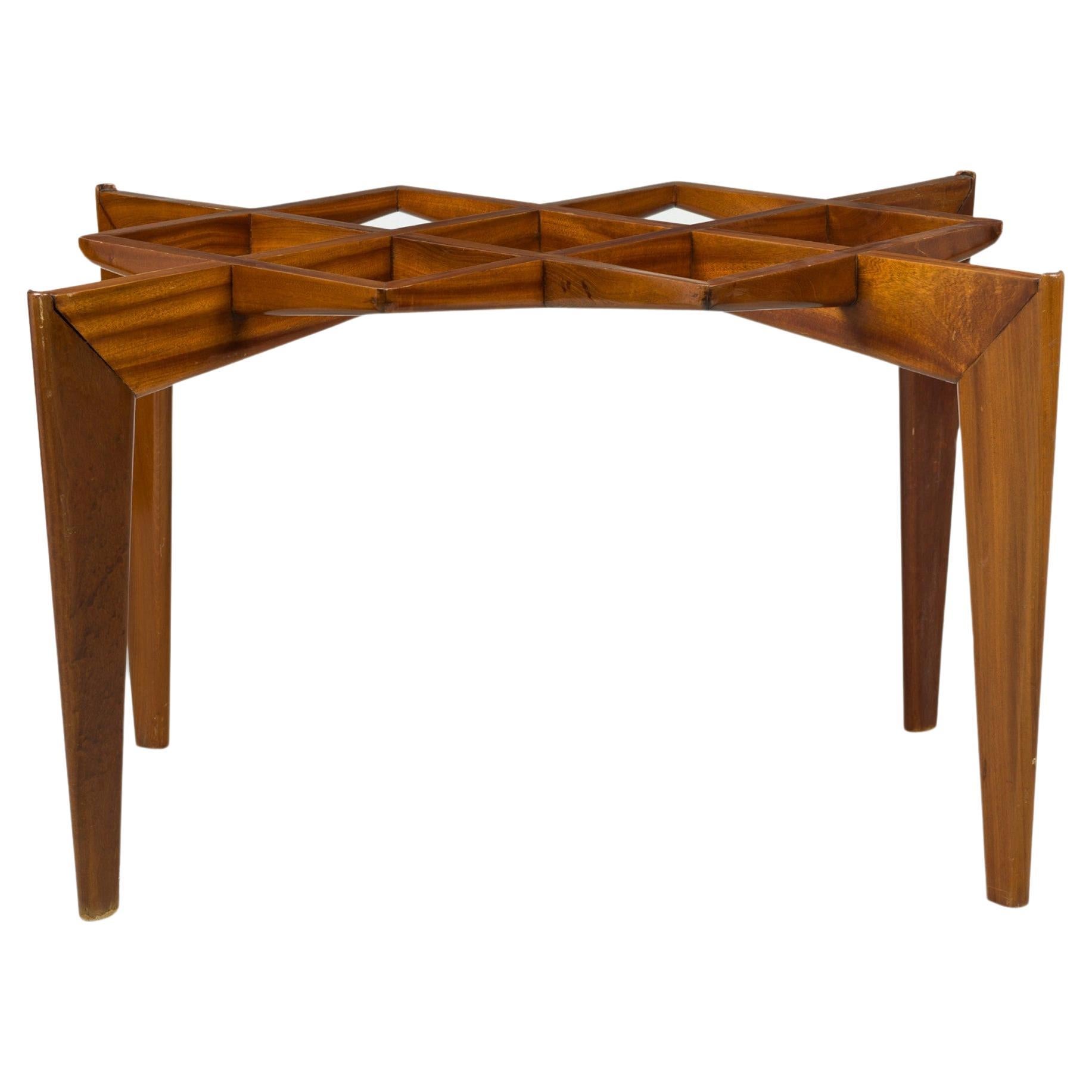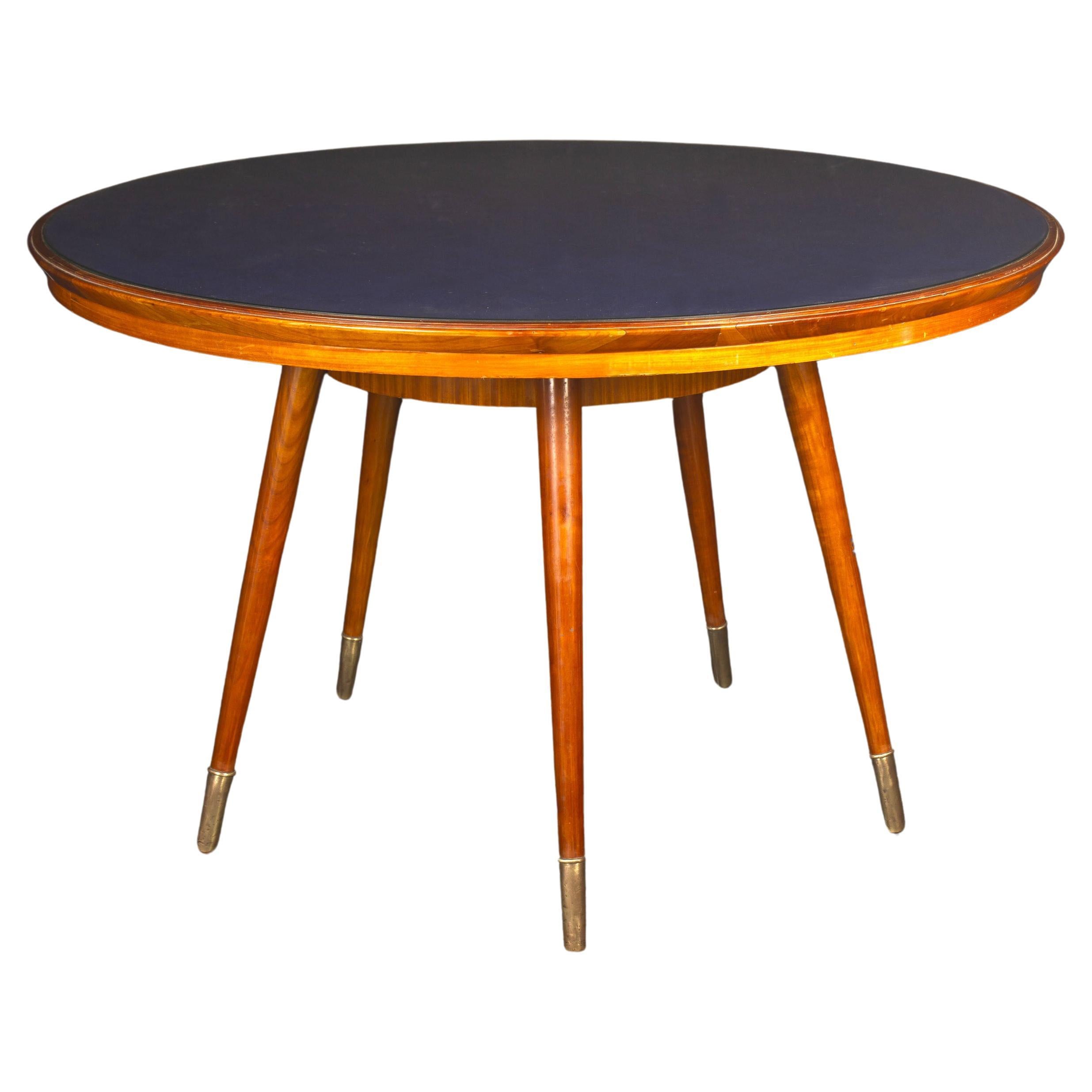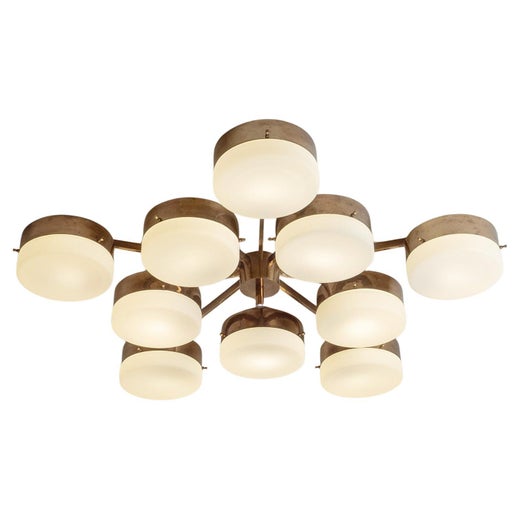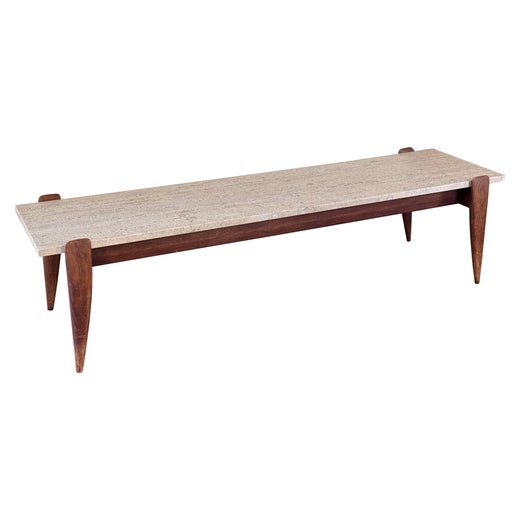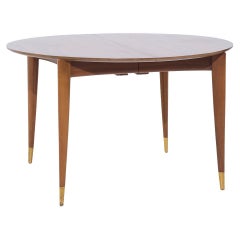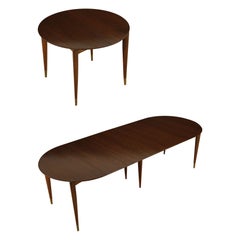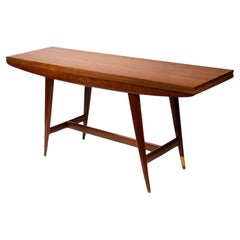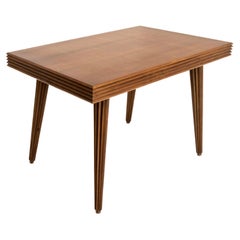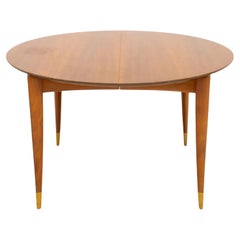
Gio Ponti model 2135 Walnut Dining Table
View Similar Items
Gio Ponti model 2135 Walnut Dining Table
About the Item
- Creator:M. Singer & Sons (Retailer),Gio Ponti (Designer)
- Dimensions:Height: 29 in (73.66 cm)Diameter: 48 in (121.92 cm)
- Style:Mid-Century Modern (Of the Period)
- Materials and Techniques:
- Place of Origin:
- Period:
- Date of Manufacture:C. 1950
- Condition:Wear consistent with age and use.
- Seller Location:Brooklyn, NY
- Reference Number:1stDibs: LU800240909972
Gio Ponti
An architect, furniture and industrial designer and editor, Gio Ponti was arguably the most influential figure in 20th-century Italian modernism.
Ponti designed thousands of furnishings and products — from cabinets, mirrors and chairs to ceramics and coffeemakers — and his buildings, including the brawny Pirelli Tower (1956) in his native Milan, and the castle-like Denver Art Museum (1971), were erected in 14 countries. Through Domus, the magazine he founded in 1928, Ponti brought attention to virtually every significant movement and creator in the spheres of modern art and design.
The questing intelligence Ponti brought to Domus is reflected in his work: as protean as he was prolific, Ponti’s style can’t be pegged to a specific genre.
In the 1920s, as artistic director for the Tuscan porcelain maker Richard Ginori, he fused old and new; his ceramic forms were modern, but decorated with motifs from Roman antiquity. In pre-war Italy, modernist design was encouraged, and after the conflict, Ponti — along with designers such as Carlo Mollino, Franco Albini, Marco Zanuso — found a receptive audience for their novel, idiosyncratic work. Ponti’s typical furniture forms from the period, such as the wedge-shaped Distex chair, are simple, gently angular, and colorful; equally elegant and functional. In the 1960s and ’70s, Ponti’s style evolved again as he explored biomorphic shapes, and embraced the expressive, experimental designs of Ettore Sottsass Jr., Joe Colombo and others.
Ponti's signature furniture piece — the one by which he is represented in the collections of the Museum of Modern Art in New York, Germany’s Vitra Design Museum and elsewhere — is the sleek Superleggera chair, produced by Cassina starting in 1957. (The name translates as “superlightweight” — advertisements featured a model lifting it with one finger.)
Ponti had a playful side, best shown in a collaboration he began in the late 1940s with the graphic artist Piero Fornasetti. Ponti furnishings were decorated with bright finishes and Fornasetti's whimsical lithographic transfer prints of things such as butterflies, birds or flowers; the Montreal Museum of Fine Arts possesses a 1950 secretary from their Architetturra series, which feature case pieces covered in images of building interiors and facades. The grandest project Ponti and Fornasetti undertook, however, lies on the floor of the Atlantic Ocean: the interiors of the luxury liner Andrea Doria, which sank in 1956.
Widely praised retrospectives at the Queens Museum of Art in 2001 and at the Design Museum London in 2002 sparked a renewed interest in Ponti among modern design aficionados. (Marco Romanelli’s monograph, which was written for the London show, offers a fine overview of Ponti’s work.) Today, a wide array of Ponti’s designs are snapped up by savvy collectors who want to give their homes a touch of Italian panache and effortless chic.
Find a range of vintage Gio Ponti desks, dining chairs, coffee tables and other furniture on 1stDibs.
M. Singer & Sons
New York furniture manufacturer M. Singer & Sons is well known to collectors of dazzling mid-century modern design — the company played an integral role in introducing Italian furniture masters to the American marketplace and introduced striking dining room tables, lounge chairs and dressers that were created in rich woods and met the day’s growing demand for sleek and simple furnishings.
While M. Singer & Sons had been offering upholstered furniture out of its storefront in downtown Manhattan in as early as 1923, it is today widely recognized for the alluring tables, seating and other designs of the postwar era.
M. Singer & Sons rose to prominence in the 1950s. A boom in prosperity followed World War II, and new homeowners all over the United States were seeking modern furniture to move into their living rooms and dining rooms. This yielded a heyday of innovation, and the likes of Herman Miller, Knoll and other furniture manufacturers of the era endeavored to position themselves as leaders in the space. M. Singer & Sons was no different, and the company’s success over the subsequent decade can be credited to Joe Singer, who was then steering the ship.
Singer saw how important it was to offer furnishings in a style that broke from the bulky and overly ornamental pieces that characterized interiors in the previous century — M. Singer & Sons would need to manufacture streamlined storage cabinets, low-profile coffee tables and practical but comfortable seating that didn’t occupy lots of real estate.
It was thanks to his quest for modernist furniture that Singer discovered legendary polymath Gio Ponti, arguably the most influential figure in 20th-century Italian modernism.
Singer reached out to Ponti and offered a partnership for M. Singer & Sons to bring the Milanese designer’s work to America. He created elegant armchairs, sideboards set on tapered legs and more for the company. At the same time, Singer struck up a collaboration with Bertha Schaefer, an acclaimed Mississippi-born interior decorator and the owner of an important Manhattan art gallery at the time Schaefer, an enthusiast of Bauhaus design, would go on to create sculptural walnut desks, angular seating framed in mahogany and other pieces for the brand. With conceptual input from Ponti, she developed a furniture line called Modern by Singer.
The new collection — which merged the alluring forms and materials associated with Italian modernism and quality American manufacturing — was an instant success for M. Singer & Sons. Smooth lines, exceptional hardwoods and luxurious finishes lent the line a high-end feel and spurred demand.
A Schaefer-designed nesting table from the Modern by Singer line was included in 1952’s “Good Design” exhibit at the Museum of Modern Art in New York City, which featured work from the likes of George Nelson, Paul McCobb, Jens Risom and others.
M. Singer & Sons introduced Ponti to an American audience, and he, in turn, introduced the company chairman to Italian designers like Ico Parisi and Carlo Mollino. These relationships also developed into successful collaborations that helped cement M. Singer & Sons' presence and prominence in modern American furniture.
Today, M. Singer & Sons’ designs by Schaefer and its stable of Italian designers are coveted and collected all over the world.
Find vintage M. Singer & Sons furniture on 1stDibs.
You May Also Like
Vintage 1970s American Mid-Century Modern Dining Room Tables
Walnut
Vintage 1950s Italian Mid-Century Modern Dining Room Tables
Brass
Vintage 1950s Italian Mid-Century Modern Dining Room Tables
Brass
Vintage 1940s Italian Mid-Century Modern Dining Room Tables
Wood, Walnut
Vintage 1950s Italian Mid-Century Modern Console Tables
Brass
2010s Modern Dining Room Tables
Ash
Recently Viewed
View AllRead More
Barnaba Fornasetti’s Hallucinatory House Has His Father’s Spirit
Behind a nondescript facade in northeastern Milan is the magical residence of Barnaba Fornasetti. It's a shrine to the style developed by his design-legend father, which still defies categorization.
Billy Cotton Layers His Interiors with Lived-In Comfort
The Brooklyn-based designer is adept at styles ranging from austere to over-the-top, espousing an architectural, detail-oriented approach also evident in his line of furniture and lighting.
